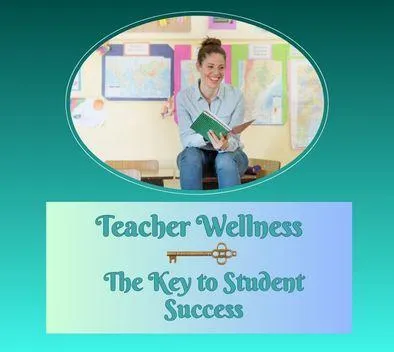Empowering Those Who Teach, Lead and Inspire
When You Thrive, Everyone Rises!


About Us
Move the Needle
on Teacher Retention
and Student Outcomes
We help educators cultivate thriving environments where motivation, connection and achievement are everyday realities for students and teachers.
Why Choose Us
Professional Learning and Coaching
that Educators Want and Need

Powerful Virtual Learning
and Ongoing Support
Bring your team to life with our high-energy keynotes, group coaching, professional learning retreats and virtual quests that spark lasting transformation. From "High Five to Thrive" to "The BOOST Playbook", our spotlight topics blend experience, research, humor and heart to uplift and empower. Perfect for schools, districts and organizations that support youth. Book now to deliver momentum that last long after the screen goes dark!

Keynote and Workshops
Our keynotes and workshops are more than professional learning—they’re a retreat that renews, equips, and inspires. Participants leave with fresh energy, practical strategies, and lasting tools they can use right away. We blend expertise in teaching, leadership, and multilingual learner support with proven approaches to wellness and retention. The result? Real-world solutions that help educators thrive—and when educators thrive, students succeed.

Cutting-edge Resources
Tailored for Today's Teachers
Our books and tools are crafted by educators, for educators—with practical strategies, time-saving templates, and easy-to-implement ideas that reflect the real challenges teachers face. Whether you’re looking to boost student engagement, support multilingual learners, strengthen teacher wellness, or build a thriving school culture, our resources deliver meaningful impact. Every guide, handout, and framework is thoughtfully designed to meet the needs of educators and students.
"Best Questers helped me to see that the teacher
I once was and the teacher I still want to be is not lost."
-Jamie White Lexington, KY
Popular Products
Choose Our Top Products
Explore our collection of insightful books, with detailed descriptions and easy purchase options.
Learn more
Access a variety of digital resources, designed to support education, training, and professional growth.
Learn more
Showcase your passion for learning and development with our exclusive branded merchandise, perfect for educators, students, and professionals
Learning & Development
Best Questers Blog

New Blog Post
Why Teacher Wellness Is the Key to Student Success
Teaching has always been more than a profession—it’s a calling. Yet, many teachers carry heavy stress loads that directly impact their well-being and the success of their students. When educators thrive, their classrooms thrive. When they are burned out, the learning atmosphere suffers.
Teacher Wellness and the Learning Environment
Teacher wellness is directly tied to teacher retention and classroom climate. Studies have shown that stressed or burned-out teachers are more likely to leave the profession, while schools that prioritize wellness see greater teacher stability and stronger relationships with students (Skaalvik & Skaalvik, 2018). Retained teachers provide consistent routines and safe, trusting environments that help students focus on learning instead of adapting to frequent teacher turnover.
Why Students Need Safe, Trusting Environments
Neuroscience tells us that the brain learns best in safe, supportive conditions. When students feel unsafe, stressed, or disconnected, their amygdala—the part of the brain responsible for processing emotions—can hijack their ability to focus and retain information (Immordino-Yang & Damasio, 2007). In contrast, safe and trusting classroom environments lower stress responses, open the prefrontal cortex for problem solving, and support deeper learning (Cozolino, 2013). Teachers play a vital role in creating this emotional climate. Their wellness influences whether classrooms feel calm and inviting or tense and unpredictable.
The Ripple Effect of Teacher Stress
When teachers experience high stress, students often mirror that stress. Jennings and Greenberg (2009) found that teacher social-emotional competence predicts the quality of teacher-student relationships, classroom management, and even student academic performance. Simply put: teachers who feel supported and balanced are better equipped to model patience, empathy, and problem-solving skills that students absorb and carry into their own learning.
Strategies for Teachers to Regulate Stress and Anxiety
Creating a safe, trusting classroom begins with teachers regulating their own stress levels. Here are three simple, research-based strategies:
Mindful Breathing and Grounding
Even two minutes of slow, intentional breathing can calm the nervous system, lower cortisol levels, and restore focus (Zeidan et al., 2010). Teachers who practice mindful breathing before class transitions or after challenging moments model self-regulation while resetting the classroom climate.Micro-Breaks and Movement
Short breaks that include stretching, a quick walk, or guided movement help release tension and boost mood-regulating neurotransmitters like dopamine and serotonin (Ratey, 2008). Inviting students to join in these quick movement breaks not only reduces teacher stress but also fosters connection and energy in the classroom.Put It on the Shelf
Teachers can practice mentally “placing” a stressful thought, problem, or worry on a shelf—visualizing setting it aside until later. This technique allows the brain to shift from emotional rumination to focused teaching in the present moment. Later, during a calm and quiet time, the teacher can “take the problem off the shelf” and reflect on it with fresh perspective. This intentional pause reduces stress, creates mental clarity, and opens space for more creative problem-solving (Neff, 2011).
The Bottom Line
Teacher wellness is not a luxury—it is a necessity for student success. Brain science confirms that students learn best in classrooms that feel safe and trusting, and that begins with teachers who are emotionally regulated and supported. By investing in teacher wellness, schools create the conditions for students to thrive both academically and emotionally.
Success Stories That Inspire
Our personalized approach has made a real difference in the lives of educators and students.
Here’s what they have to say about their journey with us.

“Thank you so much for your dedication and commitment to the VIQI Project! Your partnership has been instrumental and we couldn’t have done this without you. Thank you for navigating your challenges so gracefully and for your unwavering support to the teachers and children of St. Lucie.”
-Isabel Acosta, Variations in Implementation of Quality Interventions (VIQI): Examining the Quality Child Outcomes Relationship in Child Care and Early Education

“Thank you so much for the time and attention you dedicated to provide sessions specifically tailored to build on our professional learning plan and for including every detail we discussed. Your attention to our district needs went above and beyond expectations. I’m very grateful for the feedback you were able to provide based on session discussions. It will serve to guide our next steps and follow up with administration.”
-Tracie Carollo, Secondary ELA Specialist/World Languages, Escambia County Public Schools
Best Collaborative Get-Togethers
Best Collaborative
Get-Togethers
Complimentary Resources and Connections
Live and Recorded Webinars
Downloadable Resources
Frequent Meetups
Social Media Community Building
Collaborative Live and Virtual Events with Golden Keys Foundation

Empowering Those Who Teach, Lead and Inspire
When You Thrive, Everyone Rises!
Links
Home
About Us
Blog
Store
Contact Us
Legal
Terms of Use
Terms & Conditions
Payment Method
Privacy Policy
Join Our Community
Join our community to stay updated on the latest courses, exclusive content, and learning resources. Subscribe now and take the next step in your educational journey!



